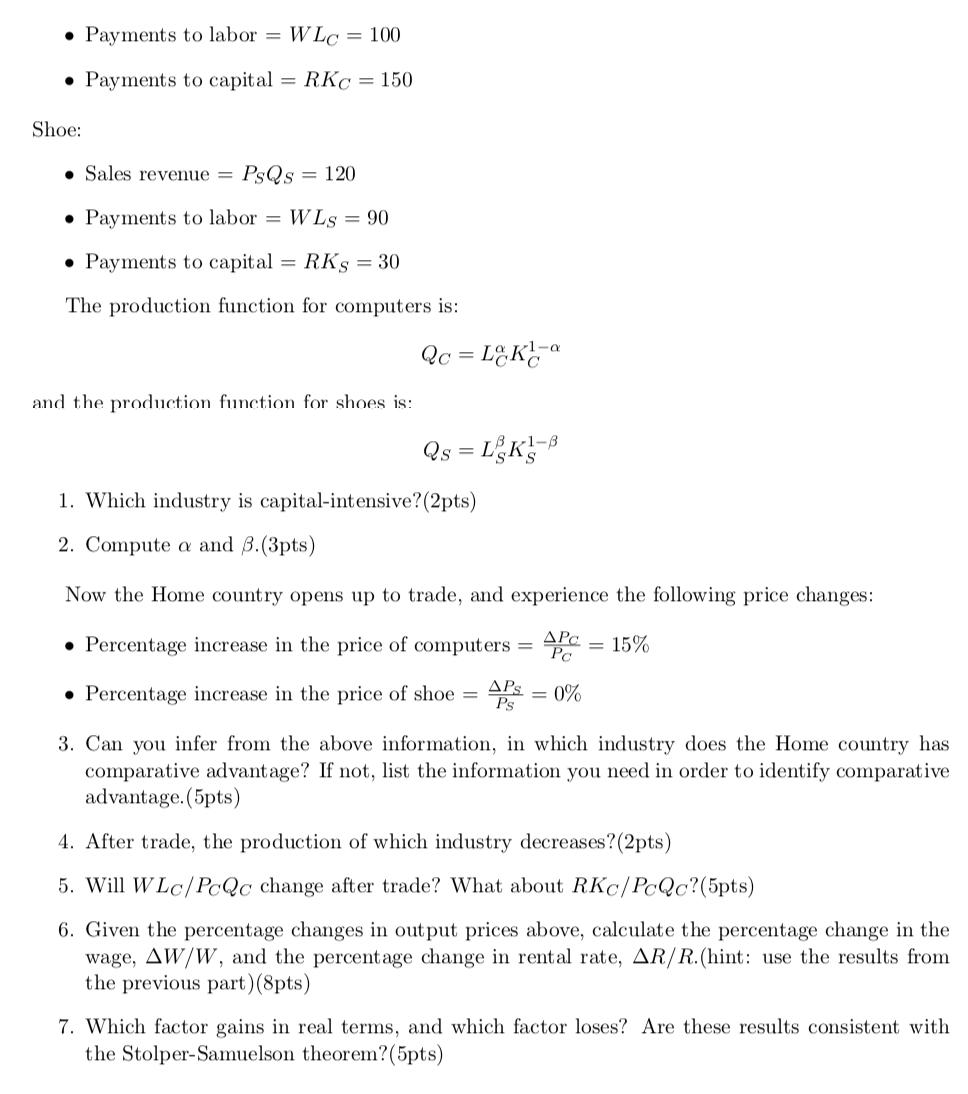Answered step by step
Verified Expert Solution
Question
1 Approved Answer
Payments to labor = WLC = 100 Payments to capital RKc = 150 Shoe: Sales revenue = PsQs = 120 Payments to labor =

Payments to labor = WLC = 100 Payments to capital RKc = 150 Shoe: Sales revenue = PsQs = 120 Payments to labor = WVLS = 90 Payments to capital = RKS = 30 The production function for computers is: Qc = L%Ka and the production function for shoes is: Qs = LK 1-8 1. Which industry is capital-intensive?(2pts) 2. Compute a and 3.(3pts) Now the Home country opens up to trade, and experience the following price changes: APC Pc Percentage increase in the price of computers = = 15% Percentage increase in the price of shoe = = 0% 3. Can you infer from the above information, in which industry does the Home country has comparative advantage? If not, list the information you need in order to identify comparative advantage. (5pts) 4. After trade, the production of which industry decreases?(2pts) 5. Will WLc/PcQc change after trade? What about RKc/PcQc?(5pts) 6. Given the percentage changes in output prices above, calculate the percentage change in the wage, AW/W, and the percentage change in rental rate, AR/R. (hint: use the results from the previous part)(8pts) 7. Which factor gains in real terms, and which factor loses? Are these results consistent with the Stolper-Samuelson theorem?(5pts)
Step by Step Solution
★★★★★
3.30 Rating (153 Votes )
There are 3 Steps involved in it
Step: 1
1 For the computer industry the total payments to labor or WLc is 100 and the payment to capital or RKc is 150 where W and R represent the wage rate and the rental rate of capital respectively Therefo...
Get Instant Access to Expert-Tailored Solutions
See step-by-step solutions with expert insights and AI powered tools for academic success
Step: 2

Step: 3

Ace Your Homework with AI
Get the answers you need in no time with our AI-driven, step-by-step assistance
Get Started


